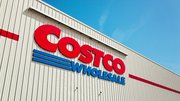Blog
Is the Apple retail model right for your company?
April 21, 2014 by Kristen Gramigna — Chief Marketing Officer, BluePay
With more than 9,000 stores at its peak, Blockbuster enjoyed a competitive advantage that no rival could duplicate. But with the ease and convenience of online shopping, Blockbuster's greatest asset soon became its greatest liability. Unable to keep up with rents, salaries, or inventories, the retail giant quickly lost market share to emerging online competitors like Netflix.
Similar fates awaited countless other retail empires that once thrived in the pre-Internet days of consumer shopping.
However, some retailers have successfully weathered this mass migration, reaping phenomenal profits despite the rise of e-commerce competitors.
No one epitomizes this success more than Apple, the world's most valuable company. Its retail stores attract more than 20,000 visitors a week, generating $5,600 per square foot in revenue.
Other companies have followed suit. BMW, for example, has invested heavily in its retail presence, borrowing liberally from Apple's Genius staff, minimalistic store layouts, and heavy emphasis on interactive learning.
What distinguishes these approaches from the traditional retail mindset? And more important, does your business model lend itself to Apple's retail strategy?
The Secret Behind Apple's Retail Formula
The success of Apple's formula hinges on what many term the company's "Triple Convergence" of:
- Retail Aesthetics
- Apple Specialists
- Workshops & Training
1. Streamlined Customer Experience
An important component of successful selling involves getting prospects to visualize what it's like to own and operate a product. But Apple takes the concept a few steps further.
Customers don't simply visualize — they experience what it's like to use Apple products. And they enjoy this highly tactile experience under the most ideal conditions, thanks to each store's:
- Minimalistic layout (free of clutter, cables and adverts)
- Bright lights, high ceilings and white spaces
Customers are actively encouraged to play with every product in the store — as much as they like and for as long as they like.
2. Fanatical and Knowledgeable Staff
Another key ingredient of Apple's success is its knowledgeable and enthusiastic staff. In the absence of traditional commissions, these in-store employees aren't incentivized to make sales. Rather, the emphasis is on education and learning, which might explain why former teachers are disproportionately represented among Apple Store employees.
Apple's staff members aren't simply enthusiastic. They're loyal fans who actually use the products and can speak passionately about features, benefits and solutions. That the company maintains a Genius retention rate of nearly 90 percent is illustrative of this deeply felt fanaticism.
3. Workshops & Training
Lastly, Apple Stores offer a range of free and paid workshops. These training sessions accomplish two very important goals:
- They help highlight the tangible benefits that each solution provides. Employees can show (instead of tell) how Apple products help solve problems.
- They help reinforce the culture among Apple's loyal fan base.
In effect, Apple doesn't simply sell products. It promotes a lifestyle built around acceptance, creativity and problem-solving.
One Final Ingredient?
Further amplifying the success of Apple's "Triple Convergence" is the company's tight price controls. Although Apple does rely on a range of online and brick-and-mortar dealers, it's very difficult to find discounts within the Apple ecosystem.
All products are the same price, no matter where you shop.
This strategy undermines one of the primary reasons why customers traditionally shop online — namely, lower prices. In-store Apple purchases cost the same, with the added benefit of:
- Knowledgeable sales staff
- Interactive play and learning
- Avoiding delivery headaches
Business Lend Itself to the Apple Retail Formula?
Apple's success has prompted many retailers to take a closer look at their in-store sales processes. Tesla has abandoned traditional car dealerships in favor of stores owned and operated by Tesla.
But is Apple's retail formula applicable to all business models? It largely depends on:
1. Degree of Interactivity
Tactile products like phones, cars, clothes and computers lend themselves to in-store purchases — especially if customers can "test drive" and "visualize" before buying.
2. Quality of Staff
Commissions aren't necessarily the best way to attract or motivate enthusiastic staff. Instead, focus on recruiting those who actually use your products, and consider offering employee discounts as a bonus. Building your team from loyal fans will make it easier to translate hidden benefits into actual sales.
3. Vertical Integration & Pricing Controls
Companies that maintain tight price controls can potentially reap larger rewards than those who invest in dealer relationships. By controlling distribution, you can decrease customers' ability to find better deals elsewhere.
4. Features, Benefits or Lifestyle?
Products are built with features but sell on benefits. Apple, BMW and Tesla take this one step further and focus on solutions that enrich people's lives. Customers aren't deciding between competing products; they're deciding between competing lifestyles.
The degree to which your retail business can incorporate these practices may determine your success in today's e-commerce-driven marketplace.
About Kristen Gramigna
Kristen Gramigna is Chief Marketing Officer for BluePay, providing retail payment processing solutions for merchants of all sizes. She brings more than 15 years of experience in the bankcard industry in direct sales, sales management, and marketing to the company and also serves on its Board of Directors.





